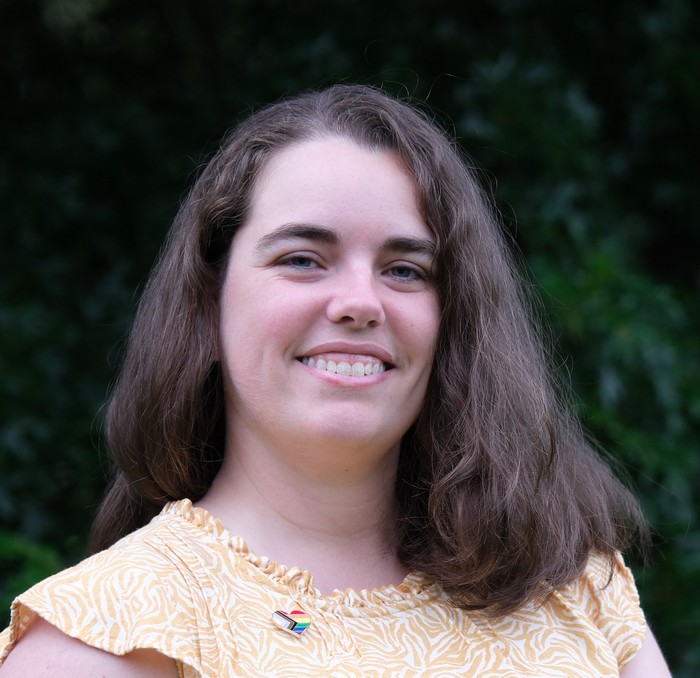Forest Health News No. 317 - May 2024
Scion’s Dr Brian Richardson wins Biosecurity award
Spanning four decades and featuring domestic and internationally significant work, Dr Brian Richardson’s career was acknowledged when Biosecurity Minister Andrew Hoggard presented him with the Minister’s Biosecurity Award at the NZ Biosecurity Awards dinner at the Beehive in April.
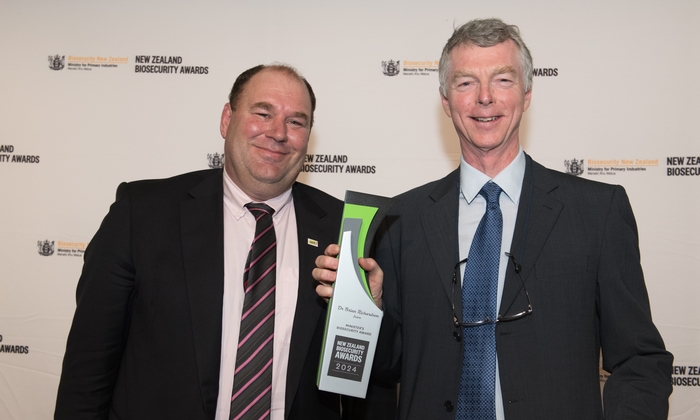
The award recognises outstanding contributions to New Zealand biosecurity over at least 10 years.
Richardson, a principal scientist in Scion’s Plant Protection Physics and Chemistry team, has worked at Scion since 1983 and research during his 41-year career has focused on forest protection, particularly in the areas of biosecurity and pest management.
His expertise in pesticide application has been applied to pest eradication operations and more recently to the problem of wilding conifers, where his aerial spraying guidelines now underpin the Wilding Conifer Control Programme.
Richardson also helped eradicate invasive insects including the painted apple moth, white-spotted tussock moth, and southern saltmarsh mosquito. Successful invasions of these pests could have crippled New Zealand’s horticulture and forestry exports.
What keeps many people in science, Richardson says, is a sense of curiosity.
“That sense of discovery is really exciting, but for me, it’s adding value. Seeing something you do of use to someone. That motivates me. Working with teams has always been a big part of it too.”
He also remembers some challenging and successful projects that became career highlights.
“I think some have shared common characteristics. They’ve been complex problems with clear goals or challenges for the science to overcome. They’ve involved partnerships between policymakers, the science teams and people managing operations. We've worked closely together as a team and that’s really key to success,” he says.
“There’s a lot of satisfaction in science that is immediately of value and can be used by people making decisions.”
Richardson has also collaborated internationally, such as with the US Forest Service on the development of spray modelling systems to quantify pesticide drift and efficacy. This work was recognised with a technology transfer award from the USDA Forest Service in 1996.
He has contributed to technical advisory groups convened to address significant biosecurity incursions such as the brown marmorated stink bug and been involved in sector-wide initiatives like the Forest Biosecurity Council and as a board member on research programmes, including Better Border Biosecurity, Bioprotection Research Centre, and Frontline Biosecurity.
Scion chief executive Dr Julian Elder says it is great to see a lifetime's achievements be recognised.
“As Brian said in his acceptance speech it is a huge reflection on all the people he has worked with over the years. It is also great to see Scion and the critical work the Crown Research Institutes do for New Zealand.
The award is the latest in a list of Richardson’s achievements including the NZ Institute of Forestry ‘Forester Of the Year’ Award in 2015, a Science New Zealand Lifetime Achievement Award in 2019 and New Zealand Plant Protection Medal in 2022.
Developing eDNA for terrestrial biosecurity monitoring
Environmental DNA (eDNA) refers to genetic material shed by organisms into their environment, such as soil, water, or air, and can be powerful for biosecurity monitoring. Already used successfully in marine and freshwater settings to analyse biological communities, this project aims to extend eDNA monitoring into terrestrial applications. A five-year Better Border Biosecurity (B3) project lead by Scion’s Andrew Cridge, in collaboration with Plant and Food’s Simon Bulman, is investigating the potential of eDNA to detect invasive fungi, insects, and bacteria at a range of MPI approved imported goods Transitional Facilities.
Currently in year two of the project, air samplers were deployed over summer at Transitional Facilities to begin testing the operational feasibility of an air sampling system in dynamic field settings. We also worked with the Biological Heritage National Science Challenge, led by the University of Canterbury, focused on state-of-the-art surveillance systems. This gave us the opportunity to compare what was detected in eDNA air samples compared to an insect UV trap using a DNA metabarcoding approach. The B3 project is also testing key insect pest groups to gain insight into their detectable range from an air sampler system.
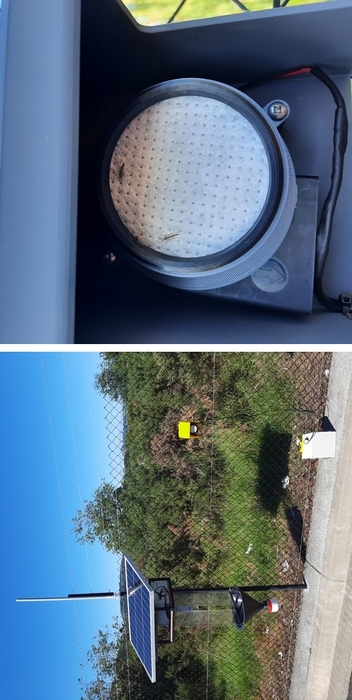
Recent fruitful knowledge sharing with Australian biosecurity researchers has revealed many of the same challenges faced in both countries and highlighted areas for collaboration. An additional goal for this project is to develop standardised protocols for deploying eDNA sampling networks for biosecurity across Australasia. We are working with key Māori stakeholders to ensure eDNA sequence data sovereignty is maintained. Key project stakeholders include the Ministry for Primary Industries, Forest Owners Association, Kiwifruit Vine Health, and New Zealand Apples and Pears.
Andrew Pugh (Scion)
Strengthening forest resilience: Insights from the 2024 Forest Biosecurity Conference
In late February, forestry stakeholders convened for the 2024 Forest Biosecurity Conference in Rotorua. Organised by a dedicated committee, including Scion pathologist Emily McLay, this event served as a crucial platform for addressing the mounting biological and climate threats facing our forests.
Over two days, participants made up of Scion researchers, Ministry of Primary Industries, Te Uru Rākau New Zealand Forest Service, forest owners, forest managers, nurseries, and related industries delved into discussions and presentations aimed at bolstering forest resilience against emerging challenges. With the stakes higher than ever, the conference underscored the pressing need for proactive measures to safeguard our vital forestry resources.
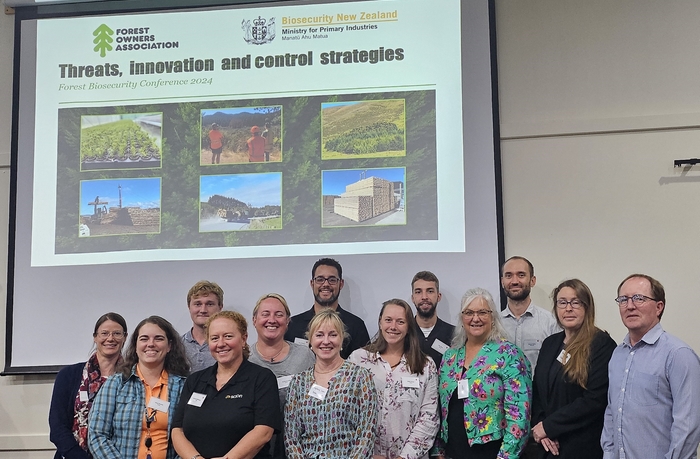
The conference kicked off with enlightening keynote speeches from industry leaders. Dr Elizabeth Heeg, CEO of the NZ Forest Owners Association and Forest Growers Levy Trust, set the tone with insights into the current state of forest biosecurity and the imperative for collective action. Stuart Anderson, Deputy General for Biosecurity New Zealand, emphasised the challenges posed by evolving threats and the tough financial climate, and the importance of being more innovative. Dr Helen Nahrung, an esteemed entomologist, provided valuable perspectives on invasive species and the changing dynamics of forest ecosystems.
Throughout the event, participants engaged in robust discussions and received updates on various fronts. The joint Biosecurity New Zealand and Forest Owners Association forum offered a comprehensive overview of ongoing initiatives and challenges. Updates on trade restrictions, climate change impacts, and research advancements underscored the multifaceted nature of the biosecurity landscape. Notably, presentations on upcoming diagnostic tools and innovative surveillance methods highlighted the industry's commitment to staying ahead of emerging threats.
Several key themes emerged from the conference discussions. Despite financial constraints, stakeholders emphasised the importance of effective biosecurity measures in protecting forest values. Collaboration, technology adoption, and continued research funding were identified as crucial elements for enhancing forest resilience. Presentations on specific threats, such as Lecanosticta and Phytophthora, underscored the need for ongoing vigilance and proactive management strategies. The importance of long-term monitoring studies to assess forest health and measure the impact of interventions was also highlighted.
As the conference drew to a close, participants engaged in a tabletop exercise focused on responding to a hypothetical biosecurity scenario. This practical exercise served as a reminder of the coordinated efforts required to address complex threats effectively. The 2024 Forest Biosecurity Conference provided a valuable forum for knowledge exchange, collaboration, and strategic planning. Moving forward, stakeholders are committed to implementing the insights gained to ensure the resilience and sustainability of our precious forests. This conference serves as a timely reminder of the collective responsibility we bear in protecting our forests and the imperative for proactive action in the face of evolving biosecurity challenges.
Darryl Herron
Meet Darryl
Meet Darryl, one of Scion’s resident pathologists, leading the Pathogen Diagnostics and Collections team. With an unwavering passion for all things forestry and a keen interest in the diseases threatening them, Darryl brings a wealth of knowledge and dedication to his work.
Originally hailing from Johannesburg, South Africa, Darryl's academic journey led him through the corridors of the Forestry and Agriculture Institute (FABI) at the University of Pretoria. There, he completed his Bachelor's degree in Microbiology, followed by an Honours degree and a Master's degree. Throughout his studies, Darryl immersed himself in practical applications, serving as a diagnostician and extension officer in the Tree Protection Co-operative Programme (TPCP).
Currently, Darryl is on the brink of completing his PhD, delving into the diversity of Fusarium, a genus of fungi crucial in forestry health. His research encompasses the notorious pine pitch canker pathogen, Fusarium circinatum, and its associations with non-pine hosts. In New Zealand, Darryl has diversified and leads several diagnostic and pathology projects studying important tree diseases, such as myrtle rust, dutch-elm disease, and kauri dieback, amongst others.
Beyond his scientific pursuits, Darryl shares a common enthusiasm for science communication with Hazel. He has contributed to the South African Academy of Young Scientists through blogging and has penned several articles. Notably, Darryl showcased his skills in the global science communication competition, FameLab, often hailed as the "Idols of Science Communication”.
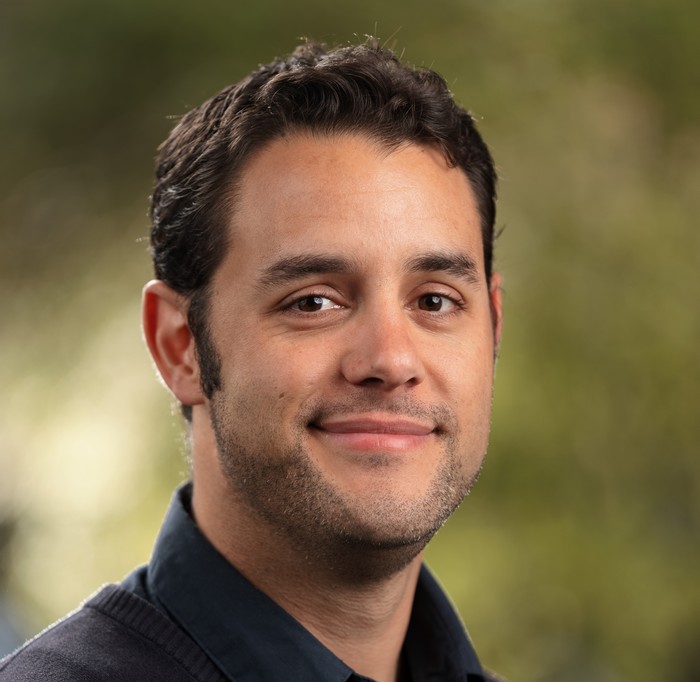
Meet Hazel
Hazel is a recent addition to Scion and the Forest Health News team. Hailing from Tampa, Florida, USA, she has a keen interest in many facets of forest health. From A (abiotic stressors) to Z (zygomycetes) if it is forestry related, Hazel wants to hear about it!
Her bona fides include a B.S. in forest management from University of Tennessee at Knoxville, an M.S. in sustainable forest management, and an Ph.D. in plant pathology from Oregon State University. She’s written publications in the US for nursery workers dealing with Phytophthora ramorum (ramorum dieback/sudden oak death) and has also worked as a science reporter for Oak Ridge National Laboratory, writing about research going on in the world of supercomputing.
She loves science communication and wants to make it an easy and approachable experience for scientists wanting to get their research out to a broader audience.
